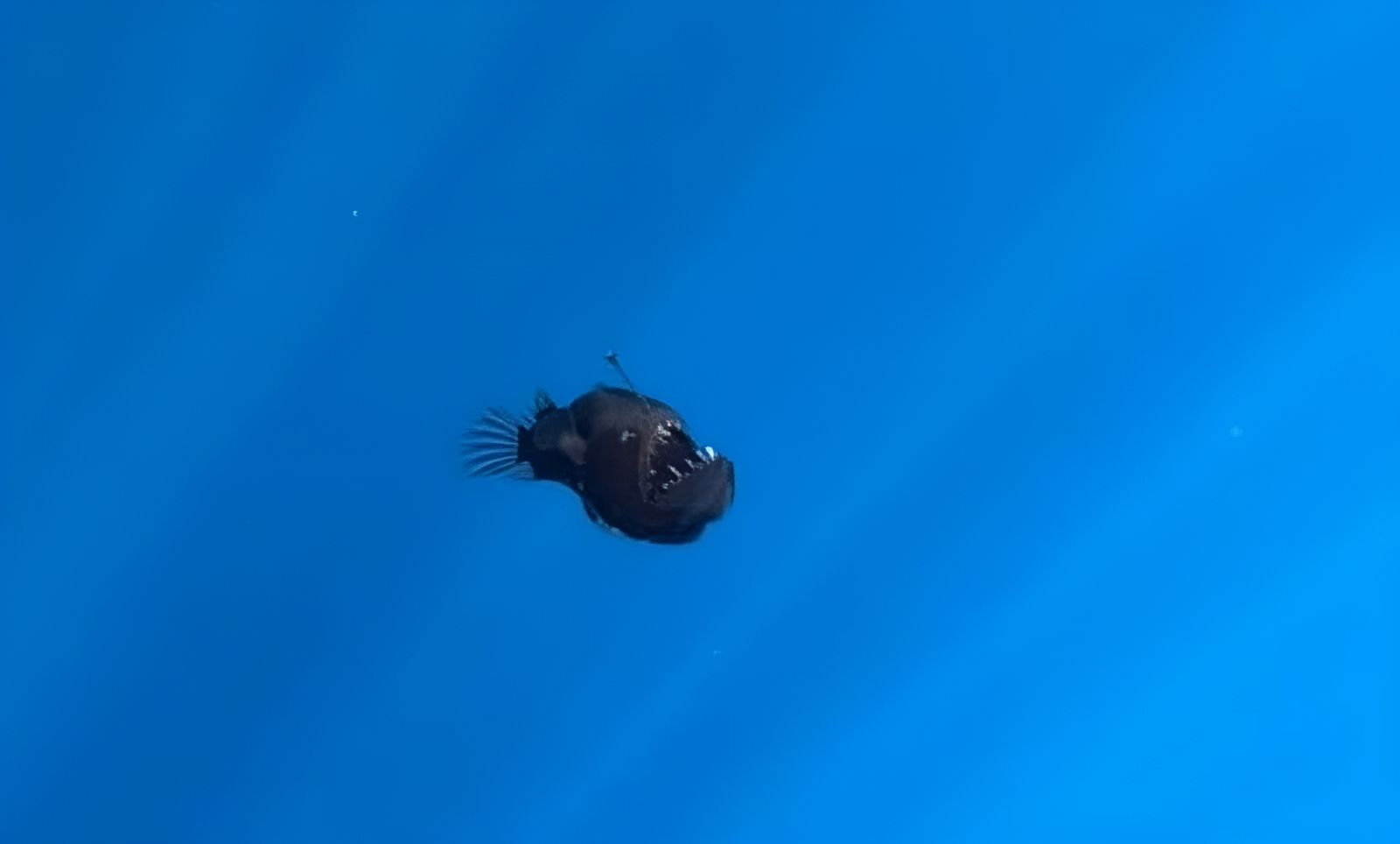Surprising observation near the surface of the deep-sea black devil 🐡
Published by Cédric,
Article author: Cédric DEPOND
Source: Condrik Tenerife
Other Languages: FR, DE, ES, PT
Article author: Cédric DEPOND
Source: Condrik Tenerife
Other Languages: FR, DE, ES, PT
Follow us on Google News (click on ☆)
This observation, made by the NGO Condrik Tenerife, has scientists questioning the reasons for this unusual ascent. The black devil, or Melanocetus johnsonii, normally lives in the abyss, between 650 and 6,500 feet (200 and 2,000 meters) deep, where darkness reigns supreme.

A predator adapted to darkness
The black devil is equipped with a bioluminescent lure, produced by symbiotic bacteria, to attract its prey. This adaptation allows it to hunt effectively in an environment where sunlight never penetrates.
Its appearance, often compared to that of a sea monster, makes it one of the most intriguing fish of the deep sea. However, its size remains modest, far from the sometimes exaggerated depictions in movies.
Why the ascent?
Several hypotheses are being considered to explain this appearance at the surface. An upward current, fleeing from a predator, or illness could have disrupted its natural behavior.
The observed specimen showed signs of physical distress and survived only a few hours after its ascent. Its condition suggests that this excursion into shallow waters was involuntary.
An unprecedented scientific opportunity
This observation is considered a world first. Until now, only dead specimens or larvae had been studied. The black devil has been transferred to the Museum of Nature and Archaeology in Tenerife for in-depth analysis.
Researchers hope to learn more about its lifestyle and the reasons for its ascent. This discovery highlights the importance of protecting marine ecosystems, which are still largely unknown.
A reminder of the fragility of the oceans
This event sheds light on the potential impacts of climate change and human activities on abyssal habitats. Plastic pollution and deep-sea fishing could disrupt these unique environments.
Protecting these ecosystems requires concrete measures, such as reducing plastic waste and creating marine reserves. These actions are essential to preserve the biodiversity of the deep sea.
To go further: What is marine bioluminescence?
Bioluminescence is a natural phenomenon where living organisms produce light through chemical reactions. In the oceans, many species, like the deep-sea black devil, use this ability to survive in the darkness of the depths.
This light is often produced by symbiotic bacteria or specialized cells called photocytes. It serves to attract prey, communicate, or camouflage.
Bioluminescent creatures are particularly abundant in the abyss, where sunlight does not penetrate. Their adaptation to this extreme environment makes them subjects of study for scientists.
Bioluminescence plays an important role in marine ecosystems. It influences food chains and species behaviors, while providing clues about the health of the oceans.